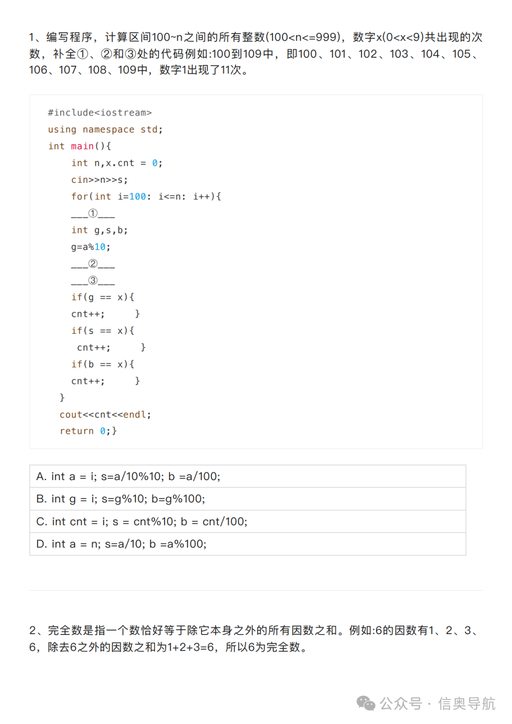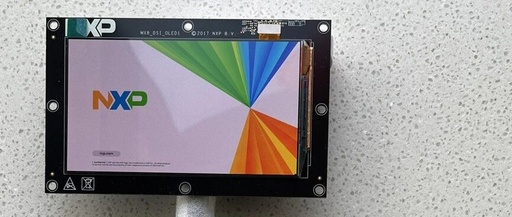Tutorials & Guides
Getting Started with Embedded Systems
Board Setup & Configuration
Programming Tutorials (C, Python, Rust)
Debugging & Performance Optimization
GESP Level 2 September 2024 – Sum of Digits
Learn programming with Lao Ma while “leveling up and fighting monsters”! This aims to provide comprehensive learning materials for children to prepare for the level examination together. Add the assistant on WeChat and reply with 【GESP Level 2 2024.09_Sum of Digits】 to obtain the source code for this problem. GESP Level 2 2024.09_Sum of Digits … Read more
Phase V C++ Special Selection Competition for Primary and Secondary Schools in Putian City – Round 1: Digital Energy Converter
Problem Description Given a positive integer n, process each digit from low to high (if the input number has less than3 digits, pad with leading zeros to3 digits, for example, the input8 is treated as008, and the input26 is treated as026), generate the energy value according to the following rules: Even Position: If the current … Read more
C++ GESP Level 3 Key Points and Preparation Questions
Detailed Explanation of Core Points for C++ GESP Level 3 In the GESP Level 3 exam, C++ is the core language assessed, and mastering the key points is crucial for success. Today, we will systematically outline the important and frequently tested knowledge points in the GESP Level 3 exam, combined with real questions and practice … Read more
Round 1 of the 5th C++ Special Selection Competition for Primary and Secondary Schools in Putian: T1 – Distance to the Sun
Problem Description In the era of interstellar exploration, humanity has launched the “Solar Walk” program! Astronauts, equipped with high-tech walking gear, take a stable step of 1 meter every second. The distance from Earth to the Sun is a constant 1.5×10^11 meters, and the length of each step is set by the equipment parameters as … Read more
Common Issues and Solutions in C++ Programming for Children
Children often encounter various issues during C++ programming, which can be related to syntax, logic, and understanding. Below, I will detail some common problems and their corresponding solutions: 1. Syntax Errors Missing Semicolon Problem: In C++, every statement should end with a semicolon (;). Missing a semicolon will lead to a compilation error. Solution: Check … Read more
C++ Elementary Exam Points (Official)
1. Program Basics Sequential Structure: Understanding program flow, basic input and output. Branching Structure: if statements, simple logical operations. Loop Structure: Using for loops and while loops to solve repetitive tasks. Arrays: Using arrays to store and access collections of data. Strings: Basics of string manipulation, such as concatenation and character search. Practical Links: A … Read more
Step-by-Step Guide to Customizing Linux Boot Logo Based on IMX93-EVK with MIPI-DSI Screen
IntroductionDuring the Linux kernel boot process, a small penguin icon corresponding to the number of cores appears in the upper left corner of the screen (for the dual-core i.MX93, two small penguins will appear). Each penguin image has a resolution of 80×80, and this image corresponds to the ppm file in the kernel source code. … Read more
Efficient Linux Commands for Analyzing Log Files During the May Day Holiday
Hello everyone, this is Linux Enthusiast Engineer. In this article, I will share 20 hardcore commands for efficiently analyzing log files using Shell. During this May Day holiday, I used these commands to troubleshoot 99% of log issues, which are simple yet effective. Let’s take a look! Source: https://segmentfault.com/a/1190000009745139 I run a small website on … Read more
Tutorial | Installing MaSIF-neosurface on Linux: A Geometric Deep Learning Method for Protein Surface Interaction Fingerprinting
Introduction MaSIF-neosurface is a computational tool aimed at learning new surfaces (neosurfaces) of protein-small molecule complexes, designed to identify potential binding regions within the new surface structures formed after protein binding with small molecules. This method proposes a deep learning-based protein design strategy that can be used to develop artificial proteins capable of specifically recognizing … Read more









